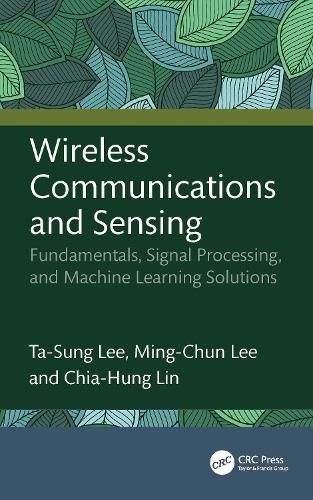Readings Newsletter
Become a Readings Member to make your shopping experience even easier.
Sign in or sign up for free!
You’re not far away from qualifying for FREE standard shipping within Australia
You’ve qualified for FREE standard shipping within Australia
The cart is loading…






In this work from leading figures in the field, Lee, Lee, and Lin describe methods of integrated sensing and communication (ISAC) and artificial intelligence-aided radio systems to provide improved efficiency and performance to wireless users using next-generation (6G) communications systems.
The authors provide the tools to master four major considerations of 6G systems: knowledge of communication systems, knowledge of radar systems, understanding of ISAC systems, and machine learning-based enhancements. Wireless Communications and Sensing: Fundamentals, Signal Processing, and Machine Learning Solutions begins by providing preliminary information regarding communication and radar systems, including descriptions of system architecture and design concepts (e.g., wireless propagation, waveforms, MIMO signal processing, and multi-user scenarios) for entry-level readers. Throughout, the authors describe novel artificial intelligence-enabled approaches to aid the design of communication and radar systems. Furthermore, this book also describes the architecture and design concepts of ISAC systems and offers an in-depth discussion of the applications of machine learning to communication, radar, and ISAC systems. Readers will be able to use their comprehensive understanding of this field to enhance ISAC system performance or aid the deployment of ISAC systems in real-world scenarios to fulfill 6G visions.
This book is especially valuable for graduate and higher-level students, scholars, and engineers who want to step into the research areas of integrated sensing and communications and artificial intelligence-aided radio systems. Readers should have at least a bachelor's degree in engineering and have had some exposure to signals and systems, communication theory, and radar principles.
$9.00 standard shipping within Australia
FREE standard shipping within Australia for orders over $100.00
Express & International shipping calculated at checkout
Stock availability can be subject to change without notice. We recommend calling the shop or contacting our online team to check availability of low stock items. Please see our Shopping Online page for more details.
In this work from leading figures in the field, Lee, Lee, and Lin describe methods of integrated sensing and communication (ISAC) and artificial intelligence-aided radio systems to provide improved efficiency and performance to wireless users using next-generation (6G) communications systems.
The authors provide the tools to master four major considerations of 6G systems: knowledge of communication systems, knowledge of radar systems, understanding of ISAC systems, and machine learning-based enhancements. Wireless Communications and Sensing: Fundamentals, Signal Processing, and Machine Learning Solutions begins by providing preliminary information regarding communication and radar systems, including descriptions of system architecture and design concepts (e.g., wireless propagation, waveforms, MIMO signal processing, and multi-user scenarios) for entry-level readers. Throughout, the authors describe novel artificial intelligence-enabled approaches to aid the design of communication and radar systems. Furthermore, this book also describes the architecture and design concepts of ISAC systems and offers an in-depth discussion of the applications of machine learning to communication, radar, and ISAC systems. Readers will be able to use their comprehensive understanding of this field to enhance ISAC system performance or aid the deployment of ISAC systems in real-world scenarios to fulfill 6G visions.
This book is especially valuable for graduate and higher-level students, scholars, and engineers who want to step into the research areas of integrated sensing and communications and artificial intelligence-aided radio systems. Readers should have at least a bachelor's degree in engineering and have had some exposure to signals and systems, communication theory, and radar principles.